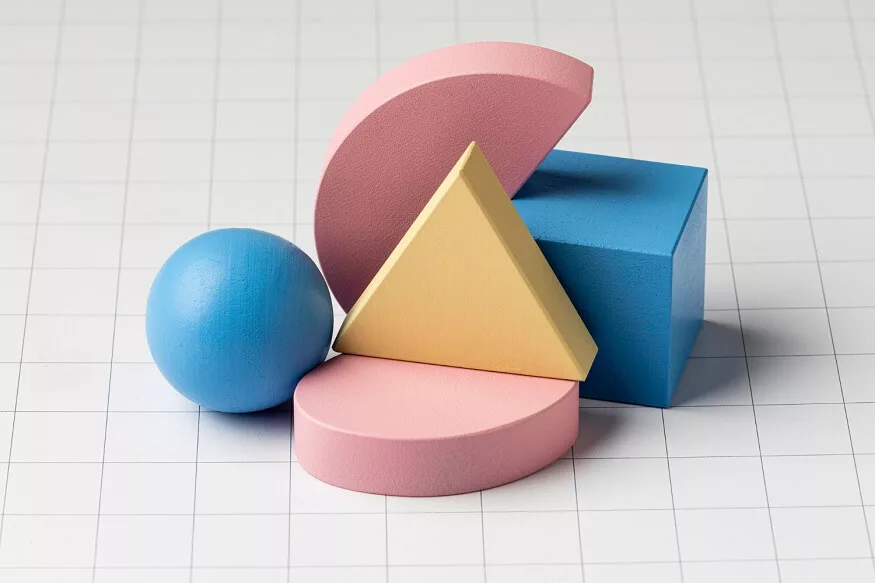What is the Surface Area?
The area is the amount of space that a two-dimensional flat surface occupies. Square units are used to measure it. The surface area of a three-dimensional object is the area that its outer surface occupies. It is quantified in square units as well.
Area generally falls into two categories:
(i) Surface Area Overall
(ii) Surface Area That Is Curved or Lateral
Also Read: What is the Difference Between Percentage and Percentile? Know 3 Key differences
Total Surface Area
The total surface area is the area that consists of the curved portion and the base(s). It is the whole area that the surface of the object occupies. A form with a curved surface and base has a total area equal to the sum of its two areas.
Surface Area That Is Curved or Lateral
The area of a shape’s curved portion alone, without including its base, is referred to as its “curved surface area” (s). When referring to geometry like cylinders, it is also called lateral surface area.
Also Read: What are Cardinal Numbers? Definition, List, Example
What is Volume?
Volume is the measure of how much space an object or substance takes up, expressed in cubic units. Two dimensions only have area; they lack volume. For instance, whereas the volume of the sphere may be calculated, the volume of the circle cannot.
In geometry and mathematics, surface areas and volumes are basic ideas. They are employed to characterise the dimensions and forms of a variety of three-dimensional objects, including cylinders, cubes, and spheres. The following are some standard formulas and explanations for figuring out the Surface areas and volumes of various geometric shapes:
Also Read: What are consecutive numbers?
Box-shaped Rectangular Prism:
- Surface Area: A rectangular prism’s surface area may be calculated using the following formula: 2lw + 2lh + 2wh, where l stands for length, w for width, and h for height.
- Volume: The formula lwh provides the volume of a rectangular prism.
Cube:
- Surface Area: Since each side of a cube is the same length, its surface area is equal to 6s^2, where s is the length of a single side.
Cylinder:
- Surface Area: The total area of a cylinder’s two circular bases plus its lateral surface area is its surface area. 2πr^2 + 2πrh is the formula, where r and h are the radius and height, respectively.
- Volume: πr^2h is the volume of a cylinder.
Sphere:
- Surface Area: A sphere’s surface area, denoted as r^2, is equal to 4πr^2.
- Volume: A sphere has a volume of (4/3) πr^3.
Cone:
- Surface Area: The total area of a cone’s base and lateral surfaces is its surface area. πr^2 + πrℓ is the formula, where ℓ is the slant height and r is the radius.
- Volume: A cone has a volume of (1/3) πr^2h.
Pyramid:
- Surface area: The calculation of Surface Area varies based on the form of pyramid (square, triangular, etc.), but it usually entails calculating the areas of the lateral faces and base(s).
- Volume: (1/3)Bh, where h is the height and B is the base’s area.
A cuboid
- Surface Area: 2(w + lh + wh), where w denotes width, h stands for height, and l for length.
- Volume:
Also Read: 12 Top Benefits of Learning Abacus
The triangle prism
- Surface Area: The total area of the three rectangle sides and the two triangle bases.
- Volume: (1/2)Bh, where h is the height and B is the base’s area.
- Half of a sphere, or the hemisphere:
- Surface Area (curved surface): 2πr^2.
- Volume: (2/3)πr^3.
Recall to utilise the proper units (e.g., cubic for volume and square for surface area) when using these equations to solve practical issues. To properly apply these calculations, it’s also vital to comprehend the shapes and their dimensions.
Also Read: 1 to 20 Number Names for Kids
Calculating Surface Areas
Just enter the dimensions’ values into the relevant formula for the particular shape you are working with to determine the surface area. Ensure that all measurements are made using the same units.
For Calculating surface areas, finding the areas of each component and adding them up will likely be necessary for irregular forms or ones that can be broken down into simpler components (like a composite shape). This will give you the overall surface area.
Remember that these are only instances of typical shapes. To precisely determine the surface area of a distinct or irregularly shaped object, you might need to utilise more sophisticated mathematical methods or software.
For calculating surface areas, you can follow the following steps:
1) Determine the formula and dimensions of the shape in order to compute the surface area of a three-dimensional object.
2) Use the following specific formulas for popular shapes:
cube (6s^2),
cylinder (2πrh + 2πr^2),
sphere (4πr^2),
cone (πr (r + √ (r^2 + h^2)),
rectangular prism (2lw + 2lh + 2wh),
cube (6s^2).
Where relevant, measure and enter the side length (s), radius (r), height (h), width (w), and length (l).
To get the overall surface area, sum the areas of each shape. If a form is irregular, divide it into smaller parts and calculate each one’s area before adding them together to get the total surface area.
Solid Geometry
Solid geometry is a subfield of geometry that studies three-dimensional shapes, or solids, in space. It is sometimes referred to as 3D geometry or spatial geometry. It entails the investigation of several three-dimensional object attributes, including volume, surface area, and form. Among the fundamental ideas of solid geometry are:
- Three-Dimensional Shapes: These are objects with length, width, and height. Cones, pyramids, spheres, cylinders, and cubes are typical shapes.
- Volume: A three-dimensional object’s volume is the measurement of the space it encloses. As was previously established, different shapes have different formulas for determining their volumes.
- Surface area: The total area of a solid’s external surfaces is its surface area. varying forms have varying surface areas that can be computed using different formulas.
- Cross-Sections: A fundamental concept in solid geometry is the understanding of how a solid’s cross-section varies with different slices. For instance, different heights when a cylinder is sliced produce different-sized circles.
- Similarity and Congruence: Similar to plane geometry, congruence (same shape and size) and similarity (same shape but various sizes) apply to solid geometry as well.
- Cavalieri’s Principle: Cavalieri’s Principle argues that two solids have the same volume if their cross-sectional areas are identical at all heights.
In several disciplines, such as computer graphics, physics, engineering, and architecture, solid geometry is essential. Professionals can use it to study and create three-dimensional things and structures found in the real world.
Also Read: Tips to Solve a Rubik’s Cube for Kids
Concepts of surface areas and volumes are taught at EuroSchool through engaging and hands-on ways. Students comprehend and apply formulas for estimating surface areas and volumes of various forms through practical exercises, the use of digital tools, and problem-solving in the real world. This method creates a dynamic learning environment where students gain a profound understanding of geometry.










